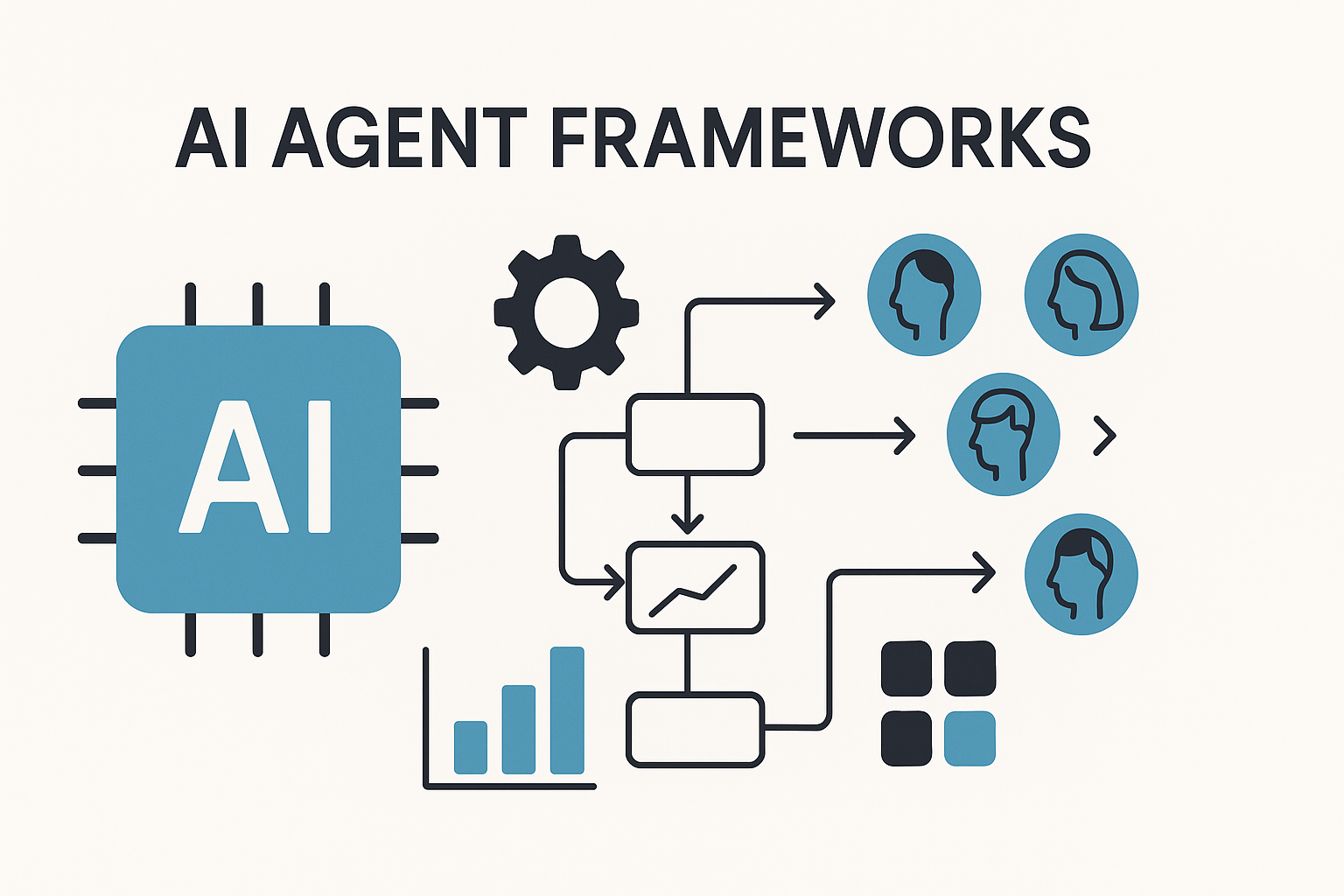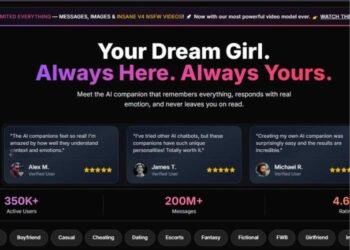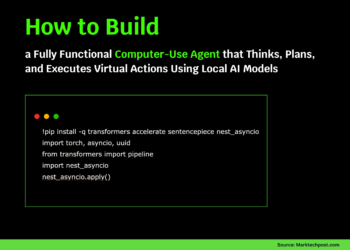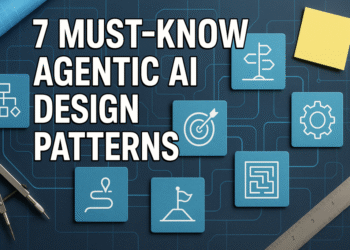
7 AI Agent Frameworks for Machine Learning Workflows in 2025
Image by Author | ChatGPT
Introduction
Machine learning practitioners spend countless hours on repetitive tasks: monitoring model performance, retraining pipelines, data quality checks, and experiment tracking. While these operational duties are essential, they often consume 60-80% of a team’s time, leaving little room for innovation and model improvement.
Traditional automation tools can handle simple, rule-based workflows, but they struggle with the dynamic decision-making that machine learning operations demand. When should you retrain a model based on performance drift? How do you automatically adjust hyperparameters when data distributions change? These scenarios require intelligent systems that can reason about complex trade-offs and adapt to evolving conditions—exactly what AI agent frameworks provide.
What is an AI Agent?
An AI agent is software that perceives its environment, makes intelligent decisions, and takes actions to achieve specific goals without requiring constant human oversight. Unlike basic automation tools that follow rigid if-then rules, AI agents can analyze complex situations, reason about trade-offs, and adapt their behavior based on changing conditions.
In machine learning contexts, this means agents can evaluate model performance metrics, detect subtle patterns in data quality issues, decide when and how to retrain models, and even modify their own processes based on outcomes. They handle the dynamic, decision-heavy aspects of machine learning workflows that traditional automation struggles with — turning your reactive operations into proactive, intelligent systems.
Exploring Framework Options: Finding Your Perfect Match
The AI agent ecosystem has exploded with options, each designed to address different aspects of workflow automation. From visual drag-and-drop builders to code-heavy research platforms, the variety can be overwhelming. Rather than claiming one framework rules them all, the reality is more practical: different teams need different tools based on their technical expertise, organizational constraints, and specific use cases.
The seven frameworks covered here represent a curated selection spanning various approaches and complexity levels. Some excel at visual workflow design, others prioritize enterprise integration, and a few focus on cutting-edge research capabilities. This diversity isn’t a bug — it’s a feature that lets you match tools to your team’s actual needs rather than forcing your workflows into a one-size-fits-all solution.
Data Pipeline Automation
1. n8n – Visual Workflow Builder with Code Flexibility
n8n stands out as a hybrid platform that combines visual workflow design with the power to write custom code when needed. For machine learning practitioners, this flexibility is invaluable when automating data pipelines that require both standard integrations and custom logic.
Machine Learning Use Cases:
- Automated data ingestion from multiple sources with validation rules
- Model monitoring dashboards that trigger alerts via Slack or email
- Automated feature engineering pipelines that adapt based on data quality metrics
- Integration between machine learning platforms (MLflow, Weights & Biases) and business systems
n8n’s strength lies in its 400+ pre-built integrations combined with the ability to write JavaScript or Python when you need custom functionality. You can visually design a workflow that pulls data from your database, processes it through a custom feature engineering script, and automatically updates your model registry — all without managing infrastructure.
Best for: Teams that want rapid prototyping capabilities but need the flexibility to handle complex machine learning specific logic.
2. Semantic Kernel – Enterprise Integration Framework
Microsoft’s Semantic Kernel excels at integrating AI capabilities into existing enterprise applications. For machine learning teams working in large organizations, this framework provides the enterprise-grade security and compliance features necessary for production deployment.
Machine Learning Use Cases:
- Integrating machine learning models into existing business applications
- Automated compliance reporting for model governance
- Secure API orchestration for multi-model inference pipelines
- Cross-platform deployment (C#, Python, Java) for diverse tech stacks
Semantic Kernel’s modular architecture allows you to embed AI agents into legacy systems without complete overhauls. This is particularly valuable for machine learning teams that need to integrate new capabilities into established enterprise workflows.
Best for: Enterprise machine learning teams requiring robust security, compliance, and integration with existing systems.
Model Development & Experimentation
3. LangChain/LangGraph – Most Popular Programming Framework
LangChain has become the de facto standard for building LLM-powered applications, while LangGraph extends this capability to complex, stateful workflows. For machine learning practitioners, this ecosystem provides unparalleled flexibility for experimental workflows.
Machine Learning Use Cases:
- Automated hyperparameter tuning with intelligent search strategies
- Multi-model comparison pipelines that evaluate different approaches
- Intelligent experiment tracking that understands context and relationships
- Research assistants that can analyze papers and suggest experiment modifications
LangGraph’s graph-based architecture is particularly robust for machine learning workflows that require conditional logic — like automatically choosing different preprocessing steps based on data characteristics or dynamically adjusting model architectures based on performance metrics.
Best for: Machine learning researchers and engineers who want maximum flexibility and don’t mind writing Python code.
4. AutoGen – Microsoft’s Multi-Agent Python Framework
AutoGen specializes in creating collaborative agent systems where multiple AI agents work together on complex tasks. For machine learning teams, this enables sophisticated experimental designs where different agents handle different aspects of the machine learning pipeline.
Machine Learning Use Cases:
- Collaborative model development where agents handle data prep, training, and evaluation
- Automated A/B testing frameworks with agents managing different experimental conditions
- Multi-objective optimization where agents focus on different metrics (accuracy, latency, fairness)
- Research collaboration systems where agents can debate model approaches
AutoGen’s role-based architecture mirrors how machine learning teams actually work, making it intuitive for practitioners to design agent workflows that reflect their existing processes.
Best for: Teams building complex, multi-step machine learning experiments that benefit from collaborative agent approaches.
RAG & Knowledge Systems
5. LlamaIndex – Data/RAG-Focused Framework
LlamaIndex was purpose-built for applications that need to work with large knowledge bases and complex data relationships. For machine learning practitioners, this translates to robust capabilities for building intelligent systems around your model documentation, experimental results, and domain knowledge.
Machine Learning Use Cases:
- Intelligent documentation systems that can answer questions about model behavior
- Automated literature reviews that stay current with machine learning research
- Knowledge-augmented feature engineering that leverages domain expertise
- Intelligent model selection based on historical performance data
LlamaIndex’s strength lies in its sophisticated data ingestion and retrieval capabilities. It can understand complex relationships between different types of machine learning artifacts — datasets, models, experiments, papers — and use this understanding to provide intelligent recommendations.
Best for: Machine learning teams with large amounts of documentation, research, or domain knowledge that needs to be accessible to their workflows.
6. Flowise – Visual No-Code Builder
Flowise provides a completely visual interface for building AI workflows, making it accessible to machine learning practitioners who prefer drag-and-drop design over coding. Despite being no-code, it’s surprisingly effective for machine learning applications.
Machine Learning Use Cases:
- Rapid prototyping of machine learning workflows for stakeholder demonstrations
- Data quality monitoring dashboards that non-technical team members can modify
- Simple model serving interfaces with custom business logic
- Educational tools for teaching machine learning concepts through visual workflows
Flowise excels at bridging the gap between technical machine learning teams and business stakeholders. You can quickly build functional prototypes that demonstrate machine learning capabilities without requiring programming knowledge from all team members.
Best for: Teams that need to rapidly prototype machine learning solutions or want to involve non-technical stakeholders in workflow design.
Lightweight/Research
7. SmolAgents – Minimalist Python Framework
SmolAgents takes a deliberately minimal approach, providing just the essential components needed for agent development. For machine learning researchers and practitioners who want maximum control with minimal overhead, this framework offers a clean starting point.
Machine Learning Use Cases:
- Custom research experiments where standard frameworks add unnecessary complexity
- Lightweight model inference agents for edge deployment
- Educational projects for understanding agent fundamentals
- Prototype development where you need to understand every component
SmolAgents’ core agent logic fits in approximately 1,000 lines of code, making it ideal for teams that want to understand exactly how their agents work or need to modify core behaviors for specialized machine learning applications.
Best for: Machine learning researchers, educators, and teams that need lightweight, customizable agent solutions.
Choosing the Right Framework
The key to selecting an AI agent framework for machine learning workflows is matching the framework’s strengths to your team’s specific needs. All frameworks covered here are actively maintained as of 2025, ensuring ongoing support and development.
| Framework | Ease of Use | Coding Required | Team Size | Key Strength | License |
|---|---|---|---|---|---|
| n8n | Easy | Low/Moderate | Small/Medium | Visual workflows & code flexibility | Sustainable Use |
| Semantic Kernel | Intermediate | Moderate | Large | Enterprise integration | MIT |
| LangChain/Graph | Advanced | High | Medium/Large | Experimental flexibility | MIT/Apache 2.0 |
| AutoGen | Advanced | High | Medium/Large | Collaborative agent systems | MIT |
| LlamaIndex | Intermediate | Moderate/High | Medium | Data and knowledge systems | MIT |
| Flowise | Easy | None | Small/Medium | No-code visual interface | MIT |
| SmolAgents | Intermediate | High | Small | Minimalist and lightweight | MIT |
- For rapid iteration and visual development: n8n or Flowise
- For complex, code-heavy experiments: LangChain/LangGraph or AutoGen
- For knowledge-intensive applications: LlamaIndex
- For enterprise deployment: Semantic Kernel
- For research and education: SmolAgents
Start with one simple workflow—perhaps automated model monitoring or experiment tracking — and expand from there. The goal isn’t to automate everything immediately, but to build confidence with agent-based workflows that can evolve with your team’s growing expertise.
Conclusion
AI agents represent a shift in how we approach machine learning operations. Rather than replacing human expertise, these frameworks amplify it by handling the repetitive decision-making that consumes so much of our time. The frameworks explored here offer different paths to this goal, from visual workflow builders that democratize automation to sophisticated research platforms that enable cutting-edge experimentation.
The best framework for your team isn’t necessarily the most advanced or popular — it’s the one that fits your current capabilities while providing room to grow. Start small, experiment with focused use cases, and let your experience guide the evolution of your agent-powered workflows. As both your needs and these technologies continue to develop, you’ll have built the foundation for more intelligent, adaptive machine learning operations.

















